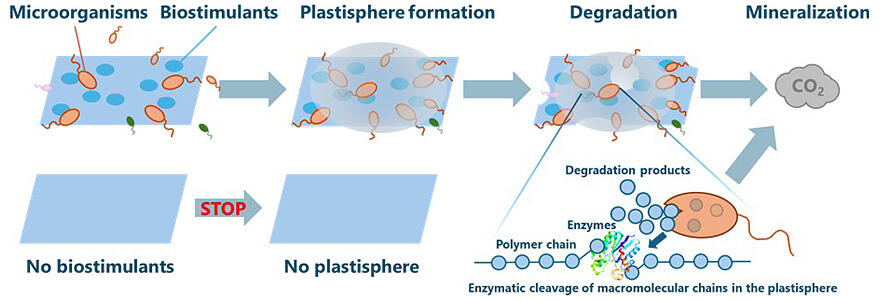Most biodegradable plastics undergo biodegradation in soil; however, they often exhibit low biodegradation rates in the marine environment and do not undergo adequate biodegradation after their release into it. A research group led by Professor Ken-ichi Kasuya of the Graduate School of Science and Technology at Gunma University, in collaboration with the Institute for Extra-cutting-edge Science and Technology Avant-garde Research of Japan Agency for Marine-Earth Science and Technology and Marine Works Japan, has successfully developed a new technology to enhance marine biodegradability of chemically synthesized aliphatic polyesters, which are not efficiently biodegraded in the marine environment. The work was published in Polymer Degradation and Stability.

Provided by Gunma University
Most biodegradable plastics commercially available today are made of aliphatic polyesters and are hydrolyzed by cutinases (hydrolytic enzymes) produced by microorganisms in the environment. In the marine environment, the number of microorganisms is comparatively low and it is known that hydrolysis of biodegradable plastics by these enzymes is difficult and that they are not readily biodegraded.
The research group succeeded in increasing the degradation rate and achieving complete biodegradation of plastics in the marine environment by using microbial attractants to accumulate plastic-degrading microorganisms in the vicinity of the plastic. Specifically, 16-hydroxyhexadecanoic acid (16HHD) and polycaprolactone (PCL) were added to biodegradable plastics as microbial attractants. As a result, the decay rates of biodegradable plastics blended with 16HHD and PCL in the marine environment increased 18.4 and 7.8 times, respectively. Furthermore, their biodegradabilities reached 90.4% and 83.2%, respectively.
16S rRNA gene amplicon sequence analysis indicated that these compounds changed the composition of the microbial community in the environment and promoted the biodegradation of plastics. Furthermore, they also proved that the technology achieved complete mineralization, with no intermediates produced in the degradation process.
This is the first report of a study in which degrading microorganisms were accumulated around the material to enhance its marine biodegradability. The findings offer an avenue for achieving the stable marine biodegradation of biodegradable plastics.
Journal Information
Publication: Polymer Degradation and Stability
Title: Enhancing marine biodegradability of poly(butylene succinate) by blending with 16-hydroxyhexadecanoic acid and poly(ε-caprolactone)
DOI: 10.1016/j.polymdegradstab.2024.110912
This article has been translated by JST with permission from The Science News Ltd. (https://sci-news.co.jp/). Unauthorized reproduction of the article and photographs is prohibited.




